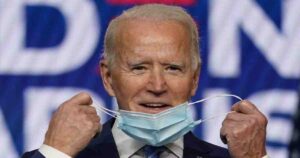By Upendra Gautam
The analytical piece “It is time to be a good neighbor” by Ms. Rao and Mr. Pokharel (Hindu, 17 October, 2015) has done a commendable job by questioning India’s so-called “special relationship” with Nepal.
In my view, the Republic of India’s hawkish section in all Indian governments has always mercilessly exploited the obedience that most of Nepal’s politicians have for India. They have made Nepal to look more dependent on India than it has been. According to Forbes Asia (Feb 2014) Indians earned a remittance of USD 3.22 billion from Nepal in 2012 (Source: Pew Research Center: Remittance Flows Worldwide). Bangladesh and Sri Lanka contributed in remittance USD 4.08 and USD 1.41 respectively to the Indian coffer.Colonized scholarship in the South Asian sub-continent only see the Nepali migrants going to India, it does not see Indians coming to Nepal-perhaps under the Indian policy of perpetual interference in Nepal, all Indian migrants have procured the Nepali citizenship paper!
The Nepali politicians have been so obedient that they never try to give priority to Nepal and its people’s interest. They never try to diversify Nepal’s legitimate international trade. So much so that they even agreed with the Indian Oil Corporation to build a pipeline to import oil from India, a country with “impose economic blockade mindset against weak neighboring countries” and make thinks very easy for India to control.
Whenever Nepal tries to do something like diversifying trade or developing road and energy infrastructure, the hawkish section of the Indian government through using the Indian and Nepali media and the obedient Nepali politicians help undercut these efforts. As a matter of fact, for Nepal it is not good to play either China or India card. It is Nepal card that the Nepali people must play and Nepali people must play it for their good. “Playing China or India card” actually tantamount to an accusation against Nepal which presumes that there is no independent card with Nepal to play. It belittles ancient Nepal’s acculturated civilization and its independent existence. This is what Nepal’s No. 1 enemy, that is, the hawkish section of the Republic of India aspires to accomplish. A fair and neutral observer should note that in the last 55 years or so, this section of the Indian government has imposed four economic blockades against Nepal. Each of these blockades has targeted a regime change and domestic political development in Nepal. An American author Prof Leo Rose in his book “Nepal’s Strategy for Survival” (1971) has written that economic blockade was one of the measures India would adopt to pressurize Nepal to extract governance and geo-political benefits.
Rise of China in Nepal’s northern neighborhood and development on the ground indicate that Nepal can import fuel from China. China is a country which believes progress in road and energy infrastructures helps the country’s sovereignty. Just the other day, China launched a hydropower plant on the Yarlung Zangbo (Brahmputra) River at a location close to Lhasa. This hydroelectric plant produces 2.5 billion kilowatt-hours of electricity a year.
In Tibet almost all the prefectures (equal to a province given more than 1.2 million square km of its size) have or soon will have modern airfields. The Lhasa airport is developed as the regional international airport. Tibet is having more than 75 thousand km of well built roads along with railways being extended to all the border points. Just reach at a road head in Tibet, you are linked to all the provinces in China including Xingjiang, Inner Mongolia, Sichuan and Yunnan and the world including Japan, Russia, Mongolia, Myanmar and Pakistan.
Tibet is reported to have been linked with national supply of oil through a pipe line in Lhasa (I have not seen it personally). Their Nyalam county, just 35 km away from Khasa (Nepal-China border point), is full with all logistics supply and infrastructures-ready to serve the nation for all of its humanitarian and security needs within its jurisdiction. One of the recent studies conducted in China on the correlation between development and expansion of fast railways and mobility of the security forces for the humanitarian assistance significantly revealed the enhancement in the accelerated delivery of required services during emergencies.
For Nepal, the biggest gap in receiving Chinese assistance, say in gas and oil, is that the Nepal government mostly led by India-obedient politicians has never duly approached China on diversifying sources for Nepal’s critical requirements. On Nepal politicians’ side, there have been a lot of talk and speeches-call it “showing of China card” or staging of a dragon dance in the air. There have been never a formal, full, substantive proposal specifying quantity, the quality standard, price, period of the procurement, storage-delivery and security mechanism. If such a proposal would have been in place by the competent Nepali authority, the Chinese side on Nepal’s request might have built or upgraded the required infrastructures as well and the oil might have been flowing. That is why all the times the Chinese ambassador in Kathmandu is in pain when all the times he has to repeat the following statement whenever he is invited by the “senior” Nepali politicians and bureaucrats: Please duly send your formal request. Latest on 15 October 2015, a Chinese Foreign Ministry spokesperson had this to say, “The Chinese side will continue to do its best to help Nepal in accordance with its request.”
And the request is never made and the Nepali people are allowed to suffer an economic blockade imposed on Nepal by a neighbor who claims to have “the special relationship” with Nepal. This means Nepal has not played its card yet and China unlike India does not interfere in Nepal’s internal affairs. Saying Nepal is playing this or that foreign card is tantamount to negating Nepal’s own rightful existence and help simply projecting it as a non-player.
(Prof. Gautam, Ph.D, is a Kathmandu-based free lance analyst.)




